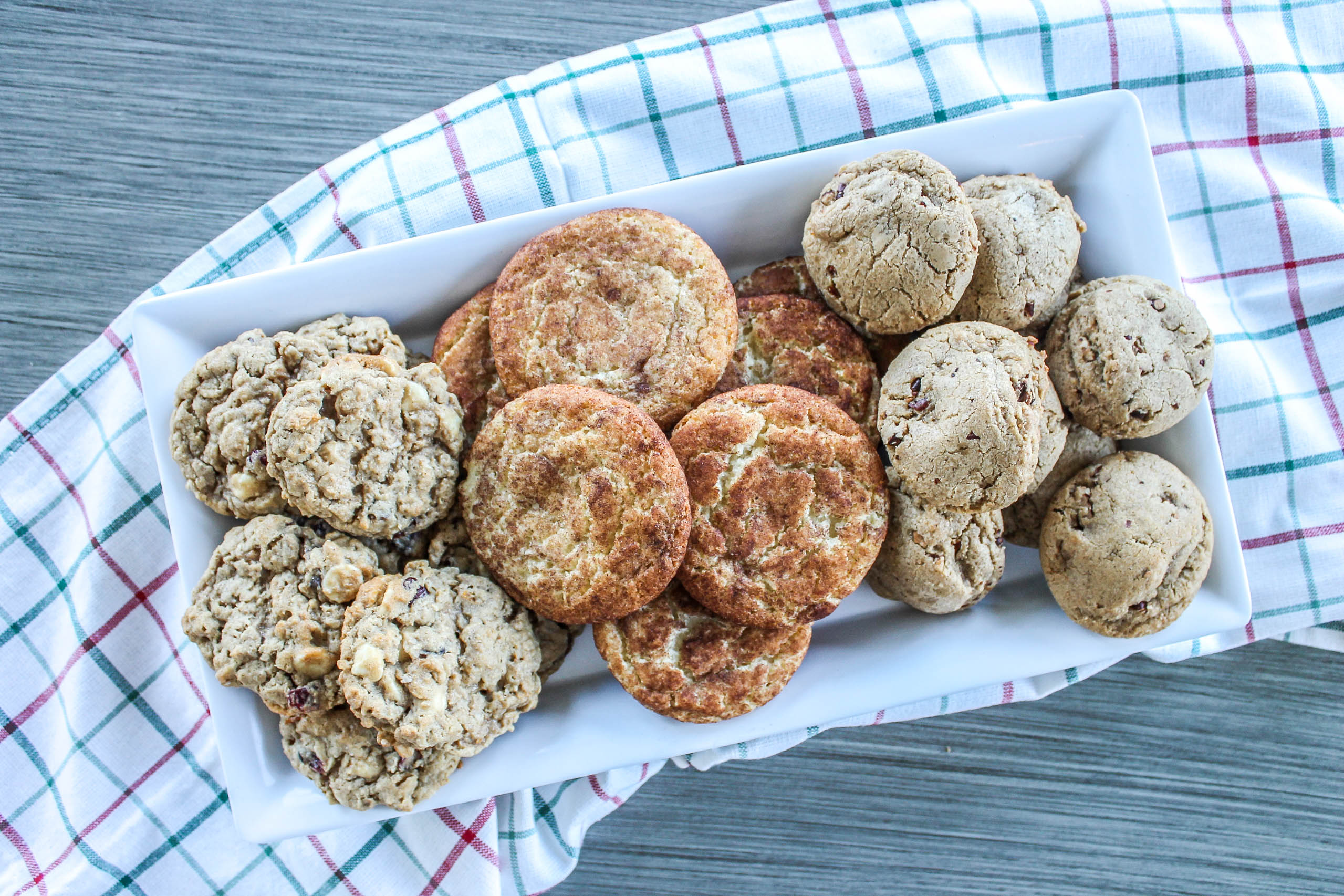 This holiday season will look vastly different from years past; there is no way around it. Even though it will be different, the Holidays can still be festive and full of baking! You may not be able to share your baked wonders in person, so cookie care packages are the way to go this season. Kyle will be baking his usual cookie line-up, Brown Butter Chocolate Chip, Oatmeal White Chocolate Cranberry, Peanut Butter, Chocolate Fudge, Snickerdoodles, Brown Sugar and Molasses Spice, and sharing them with friends and family. As we looked at this line-up, we had the realization that over the years there have been some adjustments to many of these cookie recipes. Today we shall give our followers a little update on our cookie repertoire.
This holiday season will look vastly different from years past; there is no way around it. Even though it will be different, the Holidays can still be festive and full of baking! You may not be able to share your baked wonders in person, so cookie care packages are the way to go this season. Kyle will be baking his usual cookie line-up, Brown Butter Chocolate Chip, Oatmeal White Chocolate Cranberry, Peanut Butter, Chocolate Fudge, Snickerdoodles, Brown Sugar and Molasses Spice, and sharing them with friends and family. As we looked at this line-up, we had the realization that over the years there have been some adjustments to many of these cookie recipes. Today we shall give our followers a little update on our cookie repertoire.
Before we move onto the cookie updates we wanted to let everyone know that even though all of the cookies listed here are gluten free, they were all adapted from traditional gluten-full recipes. If you don’t need to bake gluten free, these recipes easily work just as well when you swap the Gluten Free Cookie Dough Flour with all-purpose flour and nix the xanthum gun altogether!
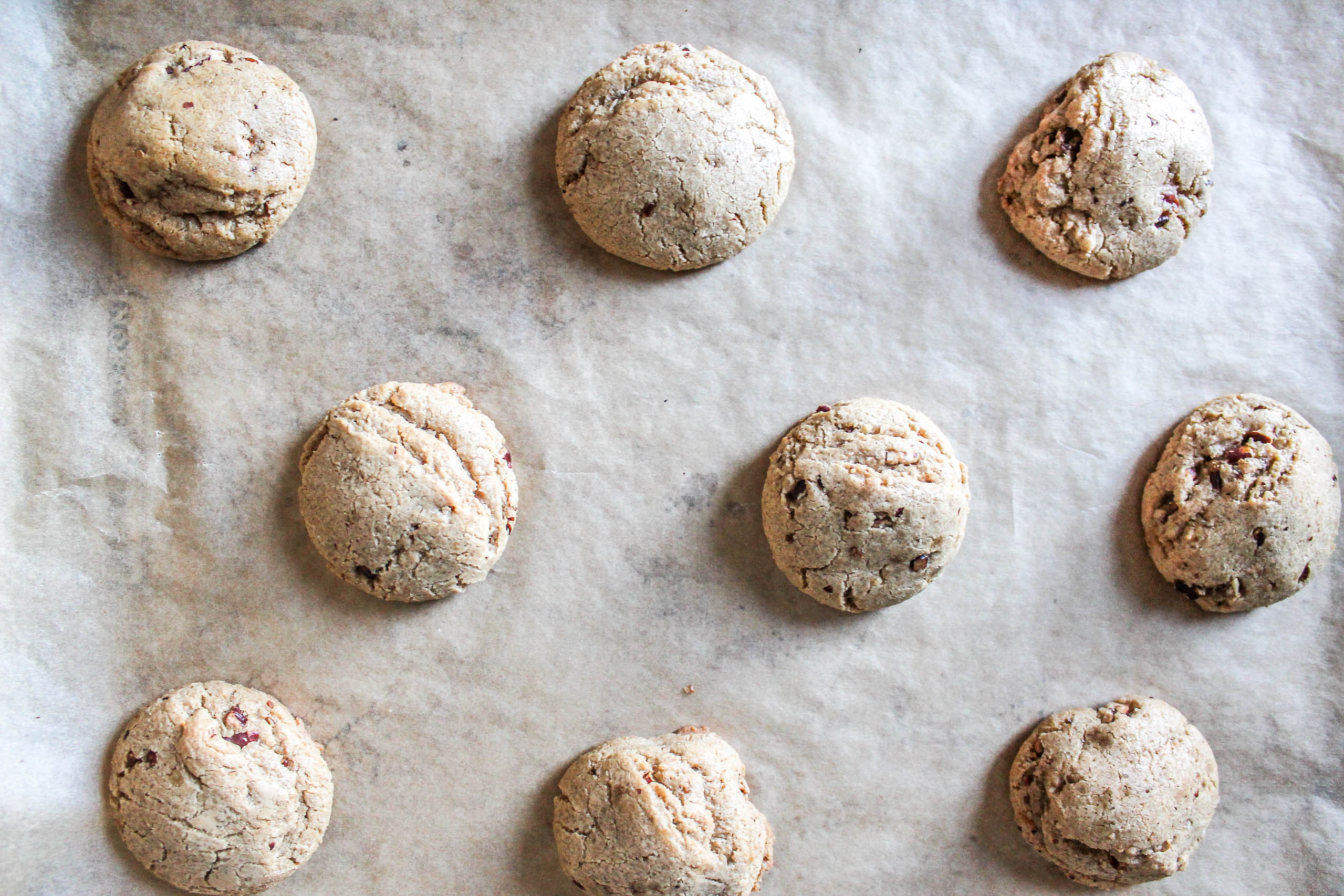 The first cookie to get a bit of a revamp is the Brown Sugar Cookie, which have experience a few minor tweaks since the original recipe’s posting. First, adding a couple of tablespoons of nonfat milk powder really enhances the creaminess and overall buttery-ness to the cookies. This dessert hack originates from Christina Tosi of the Momofuku Milk Bar cookbook. At Milk Bar, the pastry chefs add dry milk powder to a wide range of desserts, from ice cream to frosting to cookies. The addition gives these sweet treats an extra layer of flavor. Tosi compares nonfat milk to MSG in the sense that it really does not taste like anything on its own, but it adds layers of flavor to any dish.
The first cookie to get a bit of a revamp is the Brown Sugar Cookie, which have experience a few minor tweaks since the original recipe’s posting. First, adding a couple of tablespoons of nonfat milk powder really enhances the creaminess and overall buttery-ness to the cookies. This dessert hack originates from Christina Tosi of the Momofuku Milk Bar cookbook. At Milk Bar, the pastry chefs add dry milk powder to a wide range of desserts, from ice cream to frosting to cookies. The addition gives these sweet treats an extra layer of flavor. Tosi compares nonfat milk to MSG in the sense that it really does not taste like anything on its own, but it adds layers of flavor to any dish.
Since discovering this trick Kyle has been adding a spoonful or two to most of his dessert recipes. The results are mind blowing. If you don’t want to try it with a full batch of cookies, experiment with a batch of Rice Krispie Treats. Once you try it, you will immediately start using this trick in all of your home baking. Another update/addition to the recipe was toasted and roughly chopped pecans. This adds a nutty flavor layer to complement the enhanced butter flavor of the dough and it transforms this treat into Butter Pecan Cookies.
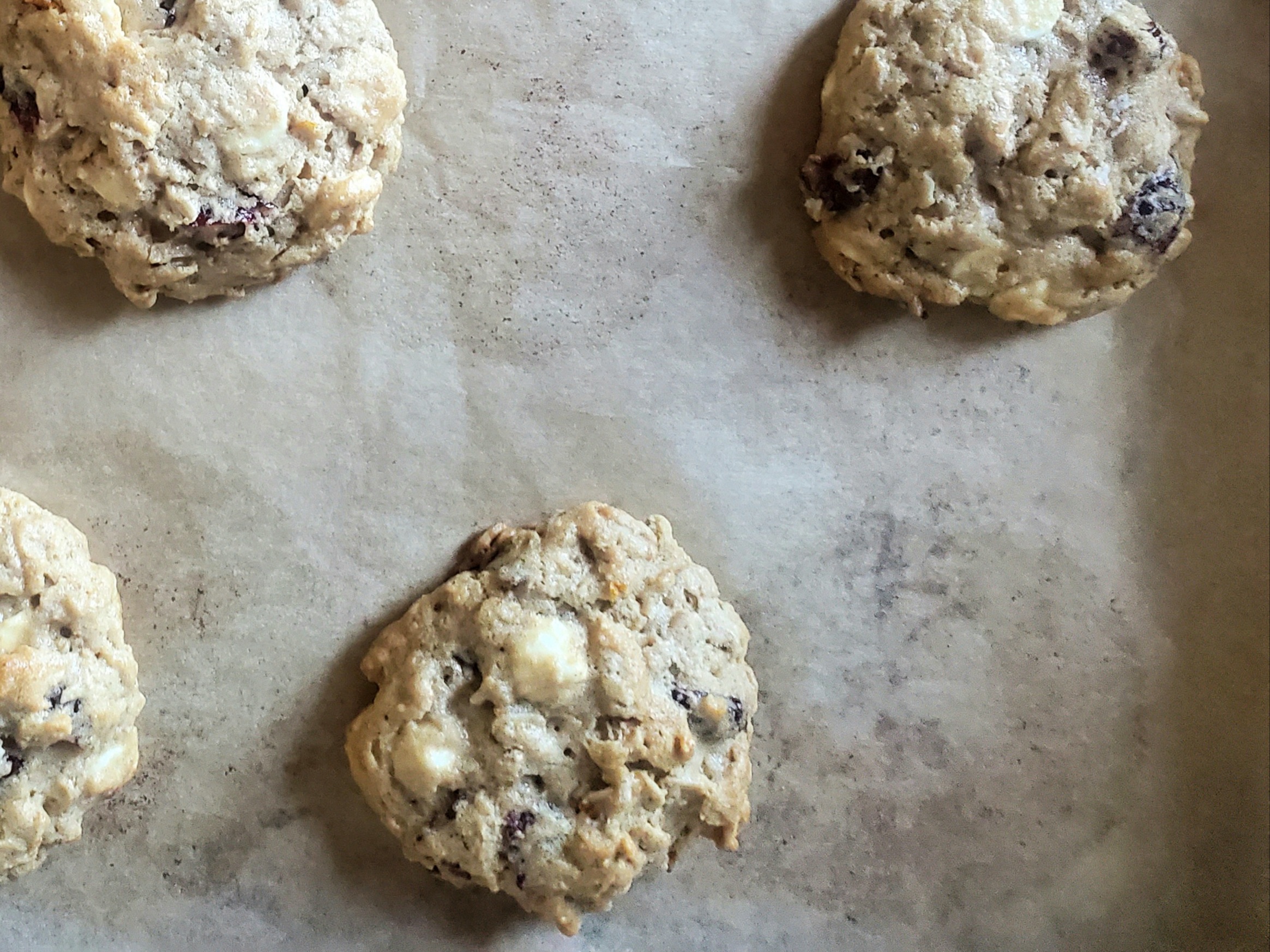 Now onto the Oatmeal White Chocolate Cranberry Cookie updates! This recipe was posted almost 5 (!) years ago. The recipe originally was inspired from culinary great Thomas Keller. The recipe itself really didn’t need any updates, but bakers like to tinker around with older recipes, always trying to out do themselves. Kyle decided to dial up the salt just a smidge. Then, the Christina Tosi additions were made – a couple tablespoons of nonfat milk powder were added, pumping up the creaminess to the dough. Finally, Kyle added a tablespoon of orange zest. This addition combined with the cinnamon, cranberry and white chocolate make these cookies the embodiment of the holiday season.
Now onto the Oatmeal White Chocolate Cranberry Cookie updates! This recipe was posted almost 5 (!) years ago. The recipe originally was inspired from culinary great Thomas Keller. The recipe itself really didn’t need any updates, but bakers like to tinker around with older recipes, always trying to out do themselves. Kyle decided to dial up the salt just a smidge. Then, the Christina Tosi additions were made – a couple tablespoons of nonfat milk powder were added, pumping up the creaminess to the dough. Finally, Kyle added a tablespoon of orange zest. This addition combined with the cinnamon, cranberry and white chocolate make these cookies the embodiment of the holiday season.
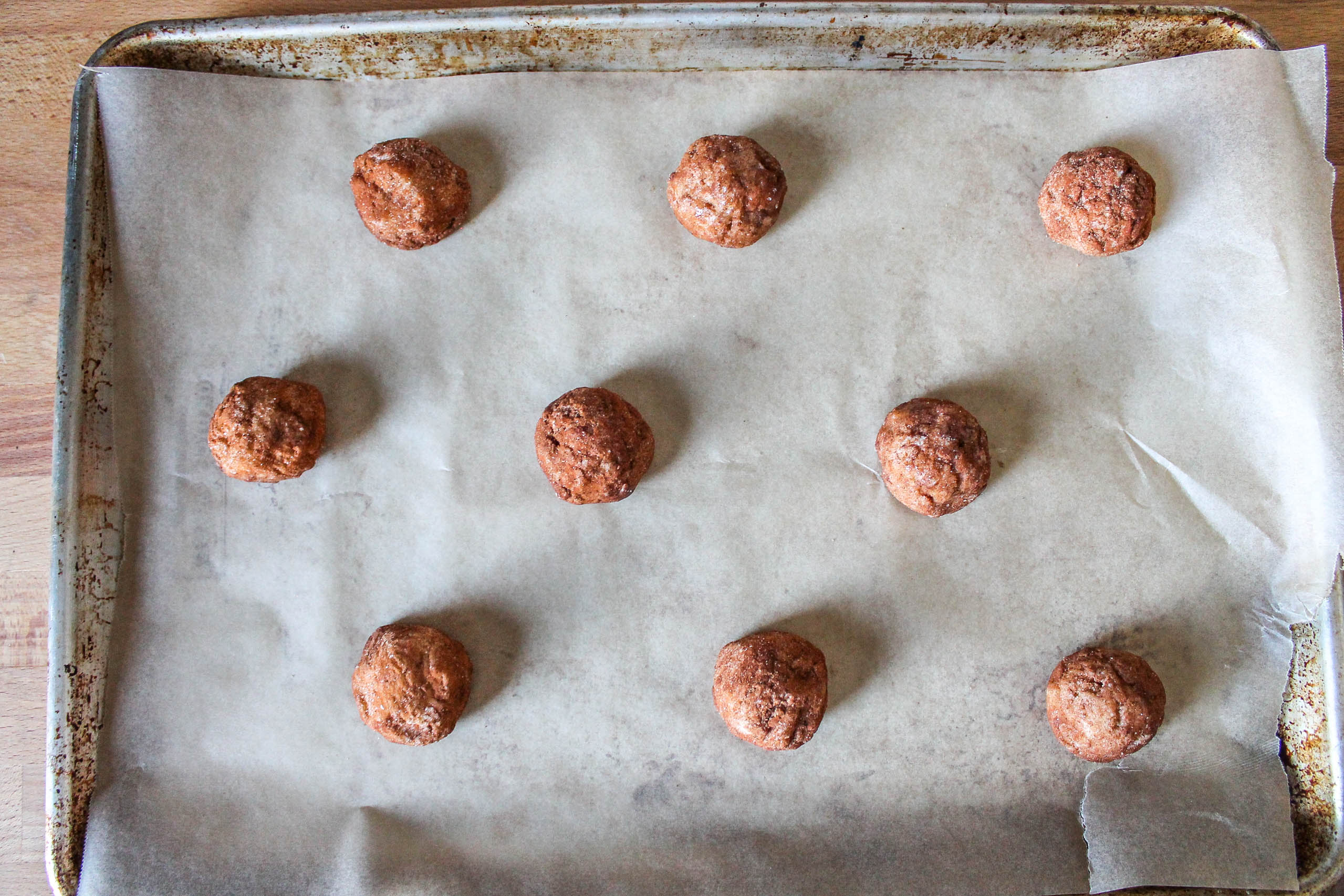 We move on to our Snickerdoodles, which received the biggest makeover. Cook’s Illustrated recipe calls for equal parts of butter and shortening, claiming that this combination produces Snickerdoodles that spread less while baking and boasts a thicker, chewier cookie. Kyle wanted to avoid the shortening, so, he decided to completely disregard the advice of Cook’s Illustrated. He instead went all in with just butter and refrigerated the dough for 30 minutes to stop the spreading of the dough during the baking process.
We move on to our Snickerdoodles, which received the biggest makeover. Cook’s Illustrated recipe calls for equal parts of butter and shortening, claiming that this combination produces Snickerdoodles that spread less while baking and boasts a thicker, chewier cookie. Kyle wanted to avoid the shortening, so, he decided to completely disregard the advice of Cook’s Illustrated. He instead went all in with just butter and refrigerated the dough for 30 minutes to stop the spreading of the dough during the baking process.
For anyone that has baked gluten free cookies, they know that they do tend to spread (a lot) while baking. Kyle could have been tempting fate by going against the advice of Cook’s Illustrated. In our original Snickerdoodle recipe the cookies came out fine, but they were a on the thinner side, definitely spreading more than our other cookie recipes during baking. This was always something that drove Kyle a little batty – but he was not going to use shortening. He has a serious aversion to hydrogenated oils!
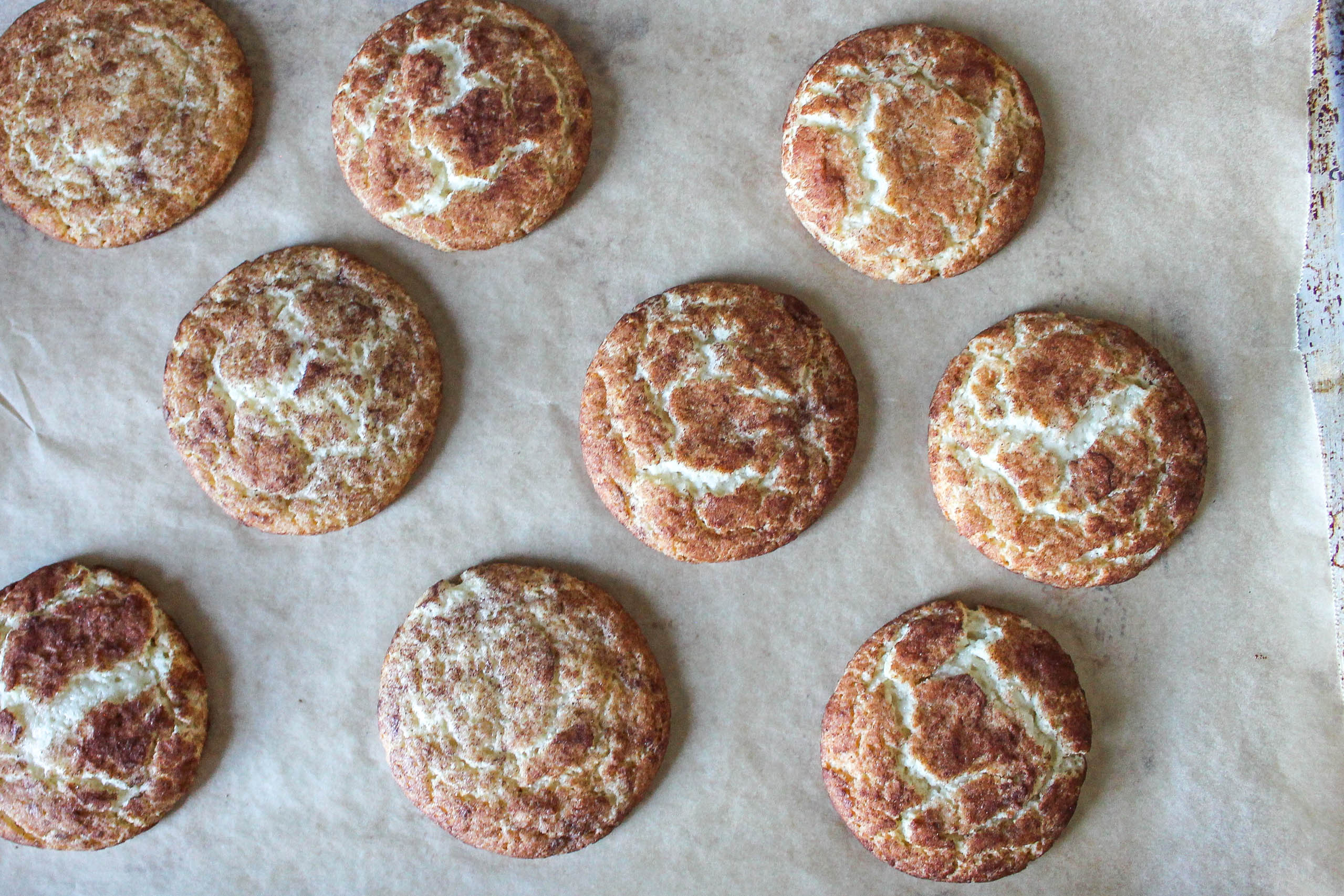 So, he went to work on crafting the no-spread gluten free Snickerdoodle. First, in addition to firming up the dough in the fridge for 30 minutes (it also makes it easier to scoop), he placed the portioned dough balls in the freezer for 1-2 hours. Yes, he froze those doodles solid. Baking frozen dough greatly limits the amount of spreading the cookie can accomplish in the over before it is fully baked. The second change to the recipe, instead of solely relying on butter, was incorporating lard in the dough in place of the shortening. As a fat, lard functions similarly to shortening but without all the pesky trans fats. It also adds a bit of vintage flair to the cookie since lard was used long before shortening came on the market. Just a note, with the addition of the lard the cookies are now non-vegetarian.
So, he went to work on crafting the no-spread gluten free Snickerdoodle. First, in addition to firming up the dough in the fridge for 30 minutes (it also makes it easier to scoop), he placed the portioned dough balls in the freezer for 1-2 hours. Yes, he froze those doodles solid. Baking frozen dough greatly limits the amount of spreading the cookie can accomplish in the over before it is fully baked. The second change to the recipe, instead of solely relying on butter, was incorporating lard in the dough in place of the shortening. As a fat, lard functions similarly to shortening but without all the pesky trans fats. It also adds a bit of vintage flair to the cookie since lard was used long before shortening came on the market. Just a note, with the addition of the lard the cookies are now non-vegetarian.
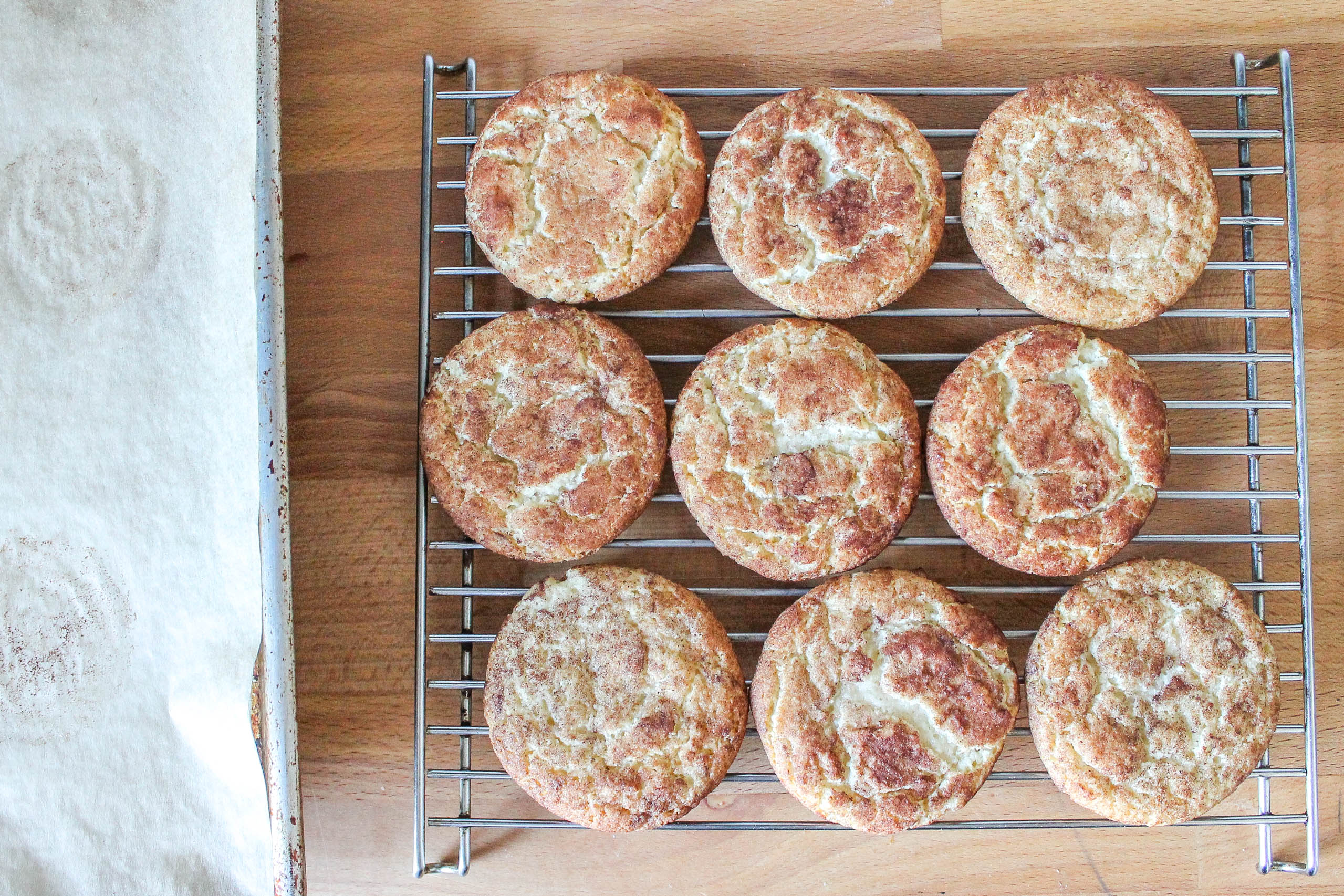 If you have not experienced cooking with lard this is the perfect recipe to get your feet wet. You cannot taste the lard in the final cookie – it only adds a savory note of flavor. It actually creates great texture to the Snickerdoodles: a crispy outside with a soft and cakey inside. The lard adds this delicious extra bonus, and, at the same time, allows Kyle to achieve his goal – Snickerdoodle cookies that hold their circular shape with almost laser-like precision.
If you have not experienced cooking with lard this is the perfect recipe to get your feet wet. You cannot taste the lard in the final cookie – it only adds a savory note of flavor. It actually creates great texture to the Snickerdoodles: a crispy outside with a soft and cakey inside. The lard adds this delicious extra bonus, and, at the same time, allows Kyle to achieve his goal – Snickerdoodle cookies that hold their circular shape with almost laser-like precision.
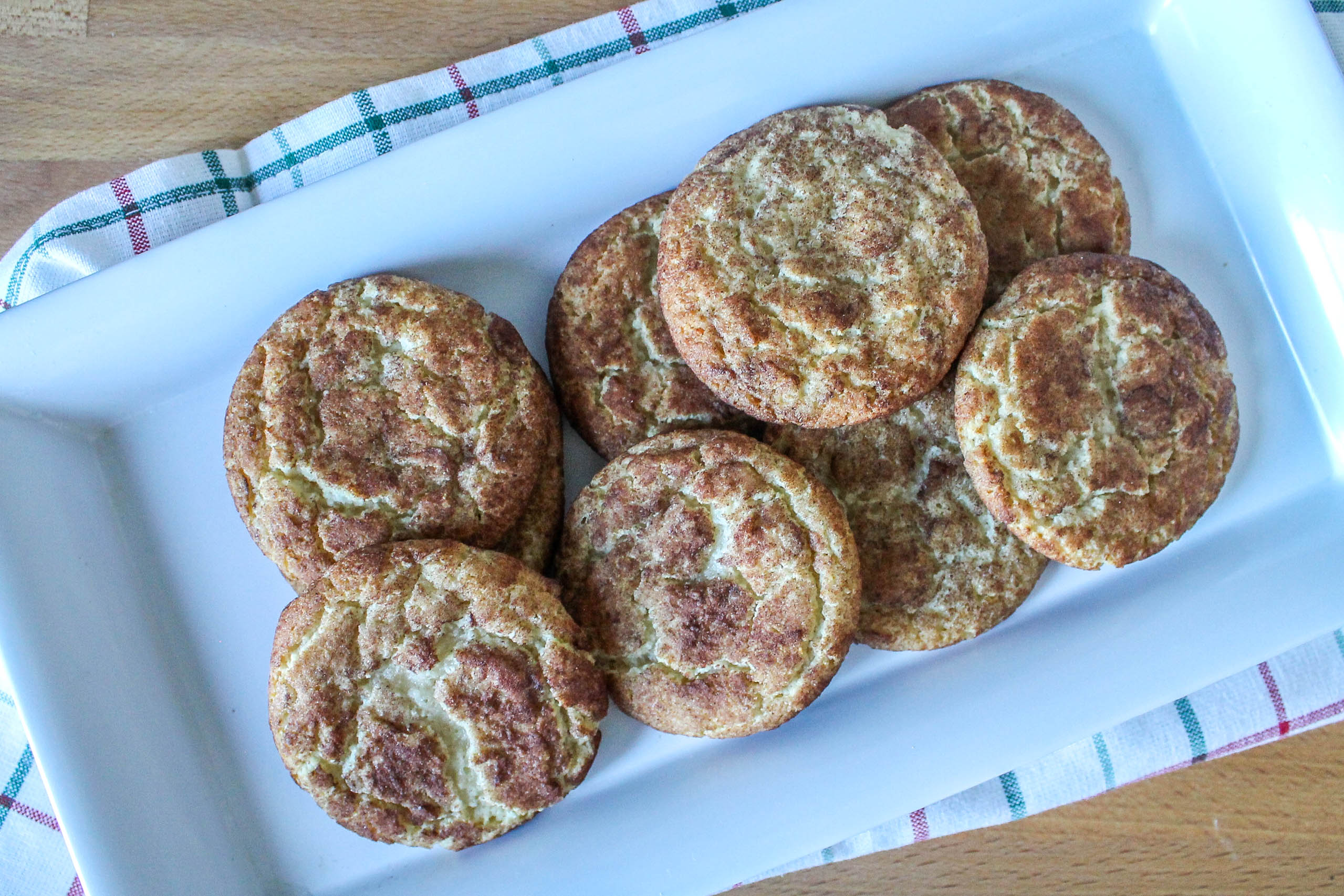 There were a few other changes made to the Snickerdoodle recipe. Two tablespoons of nonfat milk power were added (it’s a constant at this point), adding the extra layer of creaminess to the cookies and complementing the tang from the cream of tartar. Allspice was added to the cinnamon-sugar mixture used to coat the cookies. This addition still leaves the predominant flavor of cinnamon while elevating the warming, spice notes of the cookie. The final update was swapping the vanilla extract for vanilla bean paste. Typically, the the vanilla bean paste is reserved for when we make ice cream, creme brulee and vanilla buttercreams, where the vanilla bean pods really shine through. Since this is a pretty straightforward and simple cookie before you dress it up with the sugar and spice mixture, the vanilla flavor from the paste really stands out much more than it does with the vanilla extract.
There were a few other changes made to the Snickerdoodle recipe. Two tablespoons of nonfat milk power were added (it’s a constant at this point), adding the extra layer of creaminess to the cookies and complementing the tang from the cream of tartar. Allspice was added to the cinnamon-sugar mixture used to coat the cookies. This addition still leaves the predominant flavor of cinnamon while elevating the warming, spice notes of the cookie. The final update was swapping the vanilla extract for vanilla bean paste. Typically, the the vanilla bean paste is reserved for when we make ice cream, creme brulee and vanilla buttercreams, where the vanilla bean pods really shine through. Since this is a pretty straightforward and simple cookie before you dress it up with the sugar and spice mixture, the vanilla flavor from the paste really stands out much more than it does with the vanilla extract.
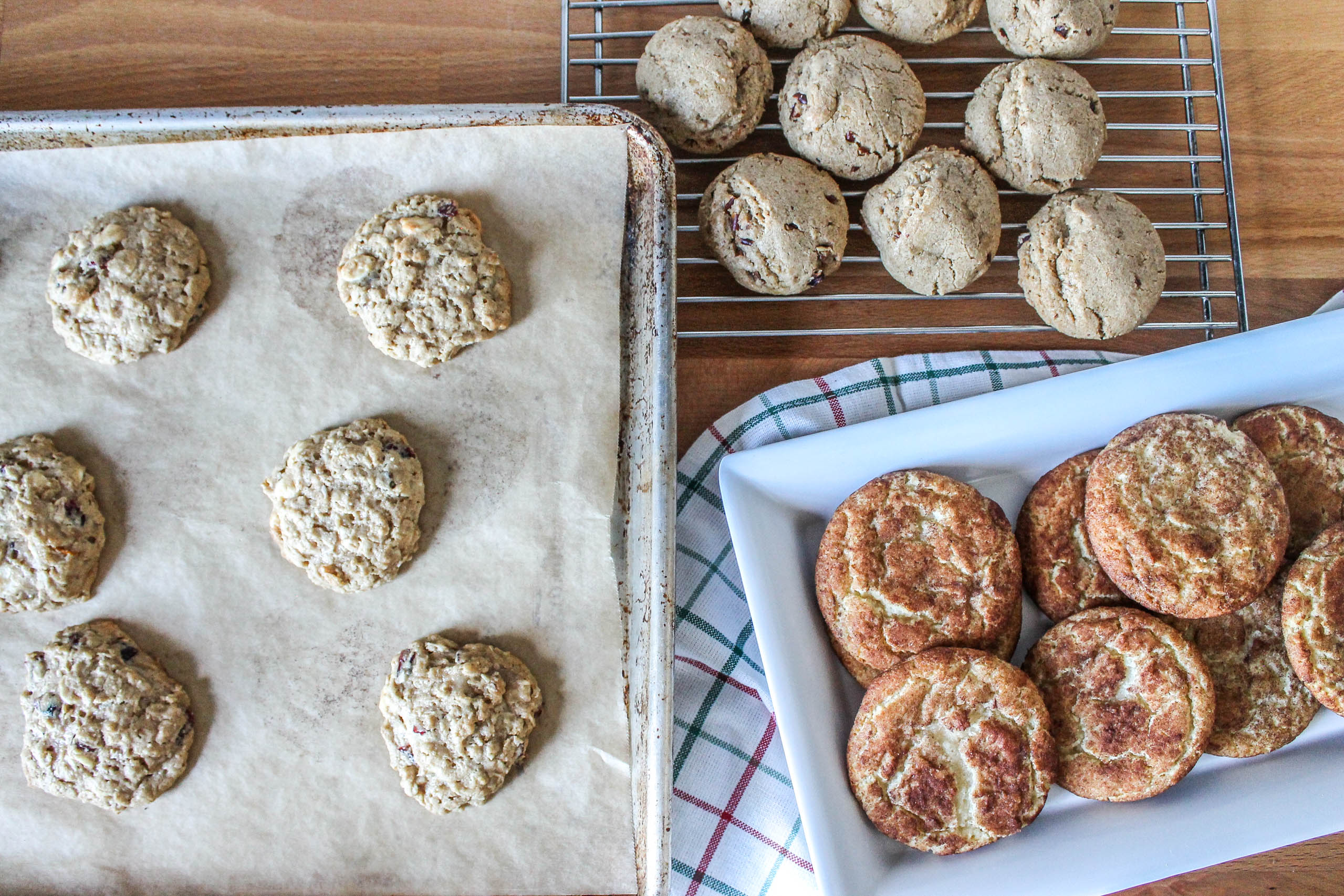 Our original Snickerdoodle recipe produced a perfectly acceptable cookie, especially compared to many gluten free options. Now, they a perfectly exceptional cookie with the extra pop! from the milk powder, vanilla bean paste, allspice and the lard, which gives it that crispy-yet-chewy, melt in your mouth texture. 2020 has been a long and stressful year for many, so who doesn’t deserve the best cookies this holiday season? I know all of you deserve it, so, bake on. Happy baking!
Our original Snickerdoodle recipe produced a perfectly acceptable cookie, especially compared to many gluten free options. Now, they a perfectly exceptional cookie with the extra pop! from the milk powder, vanilla bean paste, allspice and the lard, which gives it that crispy-yet-chewy, melt in your mouth texture. 2020 has been a long and stressful year for many, so who doesn’t deserve the best cookies this holiday season? I know all of you deserve it, so, bake on. Happy baking!
Recipe adapted from the Cook’s Illustrated Cookbook.
Find the Cookie Dough Flour Recipe here!
- 12 ¼ ounces (1 ¾ cups) sugar, divided
- 1 tablespoon ground cinnamon
- ½ teaspoon allspice
- 12 ½ ounces ( about 2 1⁄2 cups) Gluten-Free Cookie Dough Flour
- 1 teaspoon xanthan gum
- 2 teaspoons cream of tartar
- 1 teaspoon baking soda
- 1⁄ 2teaspoon table salt
- 2 tablespoons Dry Milk Powder
- 4 ounces (1 stick/8 tablespoons) unsalted butter, softened
- 4 ounces (about ½ cup) lard, or shortening
- 2 large eggs
- 1 teaspoon vanilla bean paste, or vanilla extract
- Combine ¼ cup of the sugar, cinnamon, and allspice in a large freezer bag for coating and set aside. Whisk the flour, xanthan gum, cream of tartar, baking soda, salt and dry milk powder together in a large bowl and set aside.
- Beat the butter, lard, and remaining 1½ cups sugar together in a large bowl using an electric mixer on medium speed until light and fluffy, 3 to 6 minutes. Beat in the eggs, one at a time, and vanilla until incorporated, about 30 seconds, scraping down the bowl and beaters as needed.
- Reduce the mixer speed to low and slowly mix in the flour mixture until combined, about 30 seconds. Give the dough a final stir with a rubber spatula to make sure it is combined. Refrigerate the dough for 30 minutes.
- Using a cookie scoop, portion 2 tablespoons of dough at a time into balls, then roll in the cinnamon sugar to coat and lay on a parchment-lined baking sheet. Place in the freezer for 1 to 2 hours, or until scoops of cookie dough are frozen solid.
- Adjust an oven rack to the middle position and heat the oven to 375 degrees, and line another baking sheet with parchment paper. Divide the cookie dough scoops evenly between the two baking sheets, spacing the dough balls about 2 inches apart.
- Bake the cookies, one sheet at a time, until the edges are set and just beginning to brown but the centers are still soft and puffy, 12 to 14 minutes, rotating the baking sheet halfway through baking.
- Let the cookies cool on the baking sheet for 10 minutes, then serve warm or transfer to a wire rack and let cool completely.
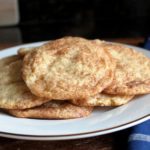
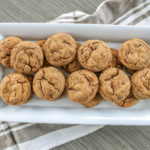
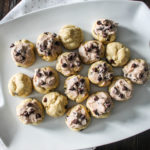
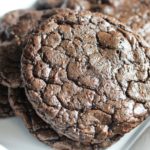
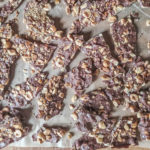
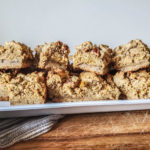
Leave a Reply